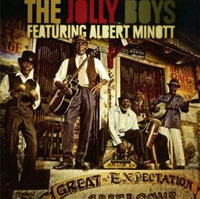
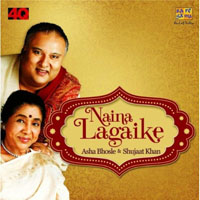
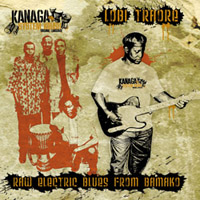
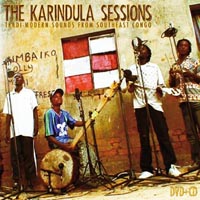
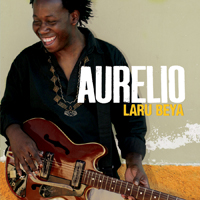
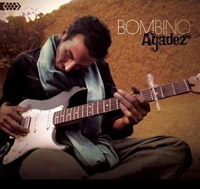
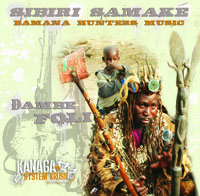
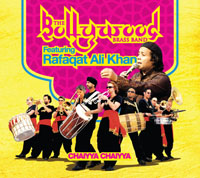
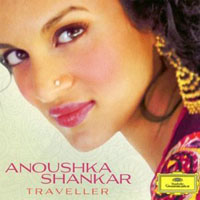

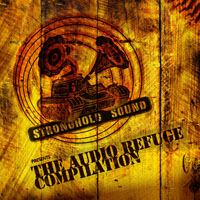
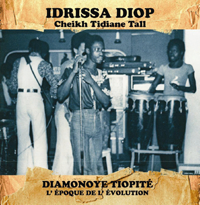

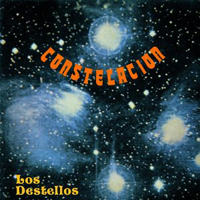
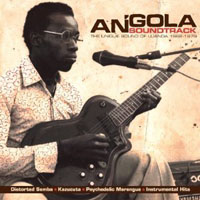
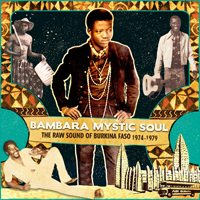
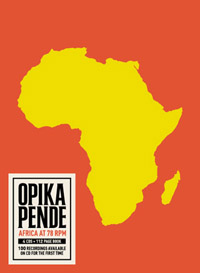
TOP TEN CDs OF 2011

JOLLY BOYS
GREAT EXPECTATION (EOne Music)
Remember the Jolly Boys? You might think they were some golden oldies due for the old folks home, after all they used to play house parties for Errol Flynn who gave them their name, according to the Mento music blog. Lead singer Albert Minott is 72, and he sounds like someone who has led a full life and not bothered to take care of his vocal pipes, like Joe Cocker, Rod Stewart or Amy Winehouse. In fact it's an Amy Winehouse hit, "Rehab," that drew me to this band. My brother told me to check it out on Youtube. Minott rasps out the tunes with a stuttering delivery, as if he is about to forget the lyrics. He is backed by banjo and marímbula (known in Jamaica as a marumba box), which perfectly fit the bill in place of guitar and bass. The marumba box is so powerful it does sound like electric bass. For percussion there's maracas, congas and a drum kit played by Dale "Dizzle" Virgo (not seen on the video, but a crucial element since it has a flanger on the snare that gives it an extra sting & sizzle). After playing the video ten times in a row, I sought out the album. Purists complain that the playlist is all pop covers and not the Mento repertoire, but it's a really inspired selection, far from the predictable stuff you find on say, Playing for Change. They remember the Jolly Boys as a Mento band, playing "Big Bamboo" & "Wheel & Turn Me" for tourists in a resort hotel in Jamaica, but at a conservative estimate, they have played those tunes 25,000 times, how much new nuance can they find in them? Here they have cut loose with a wild set of tunes by Iggy Pop, New Order, Steely Dan, Johnny Cash, Lou Reed, the Doors, the Stones, Blondie, and the Stranglers, but the songs sound hipper and oddly younger once the mento beat takes over. Iggy's "The Passenger" sounds like it was written for the Jolly Boys, with the jerky banjo line & Minott's deadpan delivery. I wouldn't be surprised to see him dive shirtless into the crowd. Minott also brings incredible pathos to Lou Reed's "Perfect Day," which is lacking in the tentative & bombastic original. Other highlights include "I Fought the Law," originally recorded by The Crickets. They wind up the album with a smashing reggaeton-inspired take on "You can't always get what you want." Again the laconic delivery of the croaky singer imbues the song with a new layer of meaning & the dubby playing of the ensemble takes it out with class.

ASHA BHOSLE & SHUJAAT KHAN
NAINA LAGAIKE (Saregama/Four Quarters in US)
After the mild disappointment of Asha's concert in Oakland on the first of October 2011 (fun to see in person; but not a great performance), I was relieved to see she has not lost her voice when I got her new album, Naina Lagaike. Her performance at the SF Jazz Festival was supposed to promote this new album, but the composer and co-singer Shujaat Khan didn't show and the band didn't know the material, so instead of the evening of classical music promised, it was a retrospective of some of her Bollywood hits. Asha recorded many duets with Mohammed Rafi back in her heyday but unfortunately early Indian music suffers from poor recording. Nowadays, with better recording, you can hear the nuances of the tabla clearly over the string section. That driving tabla beat from Amit Choubey keeps this whole effort afloat and I have been playing this disc daily for a month now, enjoying the instrumentation as much as the singing. Shujaat Khan (the son of classical musician Ustad Vilayat Khan) who wrote the melodies and played the sitar on the recordings has a warm baritone voice which perfectly complements the crystal aetheriality of Asha's flute-like alto soprano. It's 14 years or more since Asha last recorded in the classical mode (when she cut Legacy with Ali Akhbar Khan) and that's a shame because her voice and delivery are perfectly suited to these meditative modes; here the interaction with Shujaat is superb. In fact Asha gets co-writing credits on many of the songs for adding interpretation and improvisation to the final performance. I believe the lyrics contain traditional Urdu poetry (as well as Hindi verses). In addition to the sitar, there's bansuri (flute), acoustic guitar, dholak and a string section. The opening title cut is reprised once as a solo by Asha and finally as a solo by Shujaat. Beautifully sequenced and arranged, this is gorgeous music from start to finish.

LOBI TRAORE
BWATI KONO: RAW ELECTRIC BLUES FROM BAMAKO (KSK 2010)
With no preamble, Lobi launches into another scorching set of electric blues from Mali. He has bass and drums backing him, but also a well-slapped djembe and balafon continuo on half the cuts. This album was recorded live in two sessions in February 2007 and February 2008. Throughout he demonstrates the drive and virtuosity that propelled him to the top of my charts with his 2006 release on Honest Jons. This album surpasses even that one for intensity and sheer power: he indeed cooks a spoonful. Moribo Kouyate is still with him on balafon; I doubt anyone else could keep up. Unfortunately Lobi died last year -- not even fifty years old. Born in a village outside Segou on the banks of the Niger in 1961 he took to the Bambara culture readily as both parents sang in a secret society known as "Komo." (Komo is one of the three main power societies in Bamana culture: the other two are Kono and Nama. The Bamana have their own system of writing and unique metaphysical and cosmological concepts.) At 16 Lobi moved to the big city and played guitar with a folkloric troupe for three years before joining the Djata Band of Zani Diabaté. After tours of France and Ivory Coast, Lobi decided to go solo. He returned to the Bozo Bar in Bamako and grouped traditional musicians around his electrified lead guitar & power-rock trio. It's unusual to have such raucous guitar in this context but it works well. He recorded half a dozen albums with this combo. He plays long trancelike solos that remind me of ragas while the continuo adds a solid underpinning. This, his latest from Kanaga System Krush, is pure joy. Fans of Cream and Velvet Underground will also be delighted by it. The Bamana blacksmiths are members of the Komo cult because of their ability to transform materials through the medium of fire. Lobi's musical tricks are both incendiary and transformative.

THE KARINDULA SESSIONS
TRADI-MODERN SOUNDS FROM SOUTHEAST CONGO (Crammed Discs CRAW70)
This CD-DVD combination is a wonderful exposition of a largely unknown style of music, a kind of jam-band with big banjo magic from the Katanga province of Congo that gave us Jean Bosco Mwenda and other heavy hitters. It is similar to other copperbelt music found in Zambia and has been around for 40 years or more. The tunes are gritty & fast-paced but show continuity with folk music from this region since recordings were first made there by Hugh Tracey 60 years ago. The Karindula is a giant home-made stringed instrument attached to a goat-hide soundbox made from an oil drum. There is a tiny instrument that looks like a cavaquinho, plus a bit of bamboo beaten with a stick for rhythm, maracas, and, among non-musical aspects of the performance, a kid who dances with a spinning bicycle wheel on top of his skull! The dancing, a robotic hip-sawing motion done in a crouch, is also unique to this region and can be seen on the accompanying DVD which puts us on the spot at a 3-day festival during which these performances were captured. The DVD also lets you know why the crowd is going nuts: various dancers, including an old woman making a fool of herself and two guys in sports bras and kilts who seem to think they are truly à la mode, do some wild dancing. There are four bands and long jams from each (The first cut is half an hour long). Vincent Kenis was busy, filming with one hand and monitoring his laptop recording deck with the other. The last track is called "Beggar's Banquet," a parable about a greedy minister, and not a reference to the Stones. It is 17 minutes of explosive joy. There are different selections on the DVD. You must hear this!

AURELIO
LARU BEYA (Sub Pop NXA002)
2011 kicked off with this fine disc from Aurelio, a Garifuna singer-songwriter. The album is dedicated to Andy Palacio who was about to conquer the world when he suddenly died in 2009. Honduran music was not widely known until the Paranda album on Detour in 1998 broke it wide open for us. Aurelio Martinez was the youngest performer on there and the charismatic Palacio was most likely to bring it to the world stage. The present grouping was formed out of the tour that Palacio had assembled to achieve this. But Aurelio has not been in the shadow of Palacio, he is a very gifted guitarist and percussionist from a musical family that imbued him with the Garifuna musical traditions from his infancy. In addition we get guest vocals from the unmistakable Youssou N'Dour and a couple of other very talented West Africans: Balla Sidibé and Rudi Gomis of legendary Orchestra Baobab. N'Dour took Aurelio under his wing, and brought him to Dakar as well as having him open for him on tour. So Aurelio got to explore the African roots of his music first hand, and in addition get Etoile de Dakar to back him on one track on this album. The title cut has a wonderfully sinuous backbeat: I defy you not to move and groove to this. The album was recorded in a matter of weeks in a makeshift studio on the beach in Honduras. Ivan Duran the producer wanted to capture the old sound of the place where bands in the 60s played mambos, calypsos and ska -- everything but Garifuna music, in fact. But then the producer spent two years finessing the sound in post-production with overdubs. This does not detract from the spontaneity and beauty of the songs themselves. Aurelio is a natural and this is a wonderful album. (One drawback I have to mention is the package which is a long floppy sleeve, so the disc fell out and got lost!)

BOMBINO
AGADEZ (Cumbancha CD-20)
IN CONCERT AT MEZZANINE, SAN FRANCISCO, 9 DECEMBER 2011
One sign the recession is fading was the crowd in the new, trendy Mint Plaza in San Francisco's formerly seedy downtown, and a new club, Mezzanine, which was hosting Niger's guitar-wizard Bombino on Friday night. He is touring to promote Agadez, his new album on the Cumbancha label. After a terrible opening set from Matt Jennings (a talented guitarist with awful material who cannot sing), Bombino took the stage in his white Tuareg robes as whistles and ululations from the Africans present greeted him. I found a spot near the front with another grey-haired gent, this one wearing elaborate African regalia. My companion, Big Steve, who used to be a newspaperman in Oakland, told me he was a Black Panther who had fled to Africa and started a cooperative farm. Bombino looked pleased by the reception and started out on acoustic guitar with his percussionist playing calabash. He played "Tebsakh Dalet" and another ballad from Agadez, impressing us with his technical virtuosity. Then the percussionist switched to a drum kit and a rhythm guitar and bassist came on, while Bombino switched to his Stratocaster and turned on the reverb in his Fender Twin amplifier. The club is elegant and has great acoustics and pleasant ambiance plus stage lights with changing-color spotlights, but one unnecessary addition: a smoke machine. -- In San Francisco you just have to leave the back door open and the fog will come in. When the lights turned gold it looked like yellow cake uranium particles swirling overhead. The red-bearded bassist played about three notes all night: I think he was channeling the gimbri; the drummer was rock solid and created some great rhythmic patterns which Steve thought could have been heard in a disco in Tehran, or anywhere in the Arab world for that matter. The rhythm guitarist stayed in the background chopping out chords and sometimes giving a reggae-like backbeat chunk to the music, while the fifth member who was the "buddy" of the band, dressed in blue robes, a blue tagelmust, and a giant ornate leather amulet, thumped the calabash on the one and sang back-up. He was also the "translator," but Bombino only said a few words in French, mainly thank you, and I am moved by your appreciation. While he was enjoying himself he seemed very focussed and lost himself in ecstasy in his solos as the room heated up. There are suddenly lots of Tuareg bands on the concert circuit (no sooner had I slagged off Tinariwen than they were nominated for a Grammy!) but Bombino is something special. He is a truly gifted guitarist and if he continues to write material as solid as that on this album he has a great career ahead of him. After one ornate work-out, someone in the crowd yelled, "Jimi Hendrix says hi!" A mouth-harpist came on and blew some wailing blues harp which ignited Bombino during a long jam. They ended with their "hit" "Iyat Idounia Ayasahen (Another Life)."

SIBIRI SAMAKE
DAMBE FOLI (Kanaga System Krush KSK)
This is Samaké's second album and, like the first, is devoted to traditional Bamana hunters' songs from the Mande people of West Africa. The hunters of Mali predate colonialism, they predate Christianity and Islam. As animists they're in touch with the spirits which are part of their natural surroundings. The lead instrument is the traditional harp of the hunter, a kind of ngoni which is familiar from Ngoni Ba as well as Issa Bagayogo. It's been twenty years since Musique du Monde put out his first album Music of the Hunters of Sebenikoro, which I often aired on my African Music Program on the radio. Back then Sibiri was hailed as a young virtuoso, born into the hunter clan, who had adapted to being a griot as well as a hunter. Traditionally hunters are responsible for the police force and medicine (learned from the forest), as well as providing fresh meat to their communities. Sabaré's bluesy vocals and resonant bass instrument (which is bluesy in the extreme) is accompanied here by karinya, or iron scraper, and kusubu, or shaker. Imagine Jack Bruce & Ginger Baker (with or without the red hair and kilts) & you get a sense of the dynamic jamming interplay between the ngoni and the percussionists. And like "Live at the Fillmore" there are four tracks that were captured in one take each. (Funny that I thought of Wheels of Fire because it also has two really long tracks and two less-long tracks...) The title means "traditional music," but if they had styled it a rootsy jazz-blues jam from the modern city of Bamako it would have made as much sense. Another superb offering from the KSK label.

BOLLYWOOD BRASS BAND
FEATURING RAFAQAT ALI KHAN
CHAIYYA CHAIYYA (felmay 8177)
Bollywood Brass has reinvented itself. Diehard fans may not like this, but consider the alternatives: they have delved into the catalogs of the big composers of Indian film music, AR Rahman and RD Burman. They've jammed with Brasilian percussion groups, and they've been remixed, so now they've added a string section and a vocalist. The result is a success. Their brilliant instrumentalists are still evident in the solos and they even recreate some of their greatest arrangements, but the addition of a singer will disappoint some who like their brass polished and sparkling. Rafaqat dominates the first track "Maula Maula," an ancient Sufi hymn, then takes a less prominent role. Though the human voice is no match for an oboe, cornet or clarinet in the right hands, I feel this was a good move. The band will definitely garner new fans and I expect a wider appreciation for their wonderful arrangements. "Chura Liya" returns from their Rahmania album, but now in fuller effect with strings, bullfight trumpet, storming bass and percussion, and blinding solos by the possessed Sahra Moore. Rahman's big hit "Chaiyya Chaiyya" (voted 9th most popular song of all-time by a BBC worldwide poll) returns in a great version (with added train sounds to the outro; I often wondered, watching the video, from the lamentable film Dil Se, if dancers fell off the roof of the train during filming!). Going back to black and white there's the dream sequence from Awaara, one of my favorite films (starring Nargis and Raj Kapoor). I didn't know this is based on an Umm Kalthum hit from the 1930s. However, it sounds very filmi! Moore steps out on soprano on the "Dhoom medley," while "Dum maro dum" returns as an instrumental with some brilliant playing from the leader. "Ain't that peculiar" -- I mean "Gurh nalon iskh mitha"-- comes back too as the closer, with major enhancement from the vocals. The Bollywood Brass Band has gone from strength to strength; the next obvious step would be for some Indian film producer to hire them to write and perform a soundtrack. We live and dream.

ANOUSHKA SHANKAR
TRAVELLER (Deutsche Grammophon)
Anoushka is only 30 years old and already has 6 award-winning albums under her dupatta. While I enjoy her classical Indian music I don't mind her forays into other genres, like the "buleria" on her last album. Her third album Live at Carnegie Hall is a gem, and was nominated for a Grammy in 2003. Her half-sister Norah Jones also received a nomination the same year. Her newest album, Traveller, tangles with flamenco. There's plenty Indian about it as she takes over every track with her lightning riffs of fire. (I thought of the time I saw the electrifying Mahavishnu Orchestra in 1973 and realised Anoushka wasn't even born then!) It's well-known that the gypsies came from Rajasthan and travelled throughout Europe & North Africa before a large contingent settled in Spain, so it seemed natural to make the bridge between Indian and Spanish music. The Spaniards bring guitars, vocal and percussion, while the Indians on the set have shehnai, violin, tanpura and percussion to back up Ms Shankar. She even makes the traditional tortured flamenco vocal style palatable. The lutenous tones of the Spanish guitar have a church-like formality to them, solemn and spiritual, while to me the opening glissando of the sitar always conjurs up altered consciousness. I guess it comes from the use of the sitar in the 60s as a cypher for LSD, but I also remember the wonderfully apt soundtrack to Jonathan Miller's Alice in Wonderland which was performed by Ravi Shankar, improvised to a playback of the film (there's a featurette on the DVD about this). When the Spaniards set up their hypnotic beat, it's a great go-ahead opportunity for Anoushka to jam; on the slow numbers she is lyrical. If the import price puts you off, the disc will come out domestically in the US in Spring 2012.

MAMADOU DIABATE
COURAGE (World Village 468108)
This is almost a novelty: a kora album that is purely African. I mean there's no horn section, no banjo, no slide guitar, no trap drums, no Latin beat, no remix, just some great kora playing. I guess that's why it's called Courage! Diabaté's fourth album, Douga Mansa, won a Grammy in 2009. Like the Oscars the Grammies have little weight outside the industry, people stick with what they know and like, but it does mean more exposure. Also Diabaté has lived in the USA so is probably bit more up on marketing strategies and dealing with label folks than his cousins in Bamako. Though there are familiar strains, and a couple of classic pieces, the material is nearly all new, composed and arranged by Diabaté and features, in addition to his kora, a balafon, ngoni and acoustic bass. There is also percussion on calabash or djembe as the mood suits. On "Diayeh bana" the balafon stretches out and touches on "The Flight of the Bumblebee," and "Shortenin Bread" -- or so it seems to me. Beautifully recorded, this is a meditative album, one you can listen to over and over.